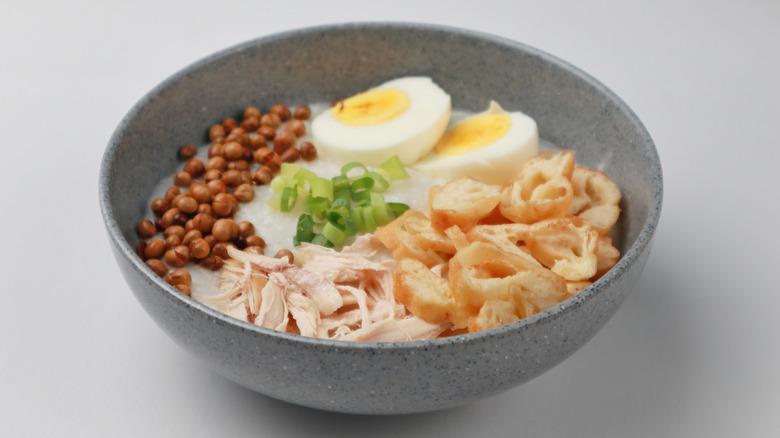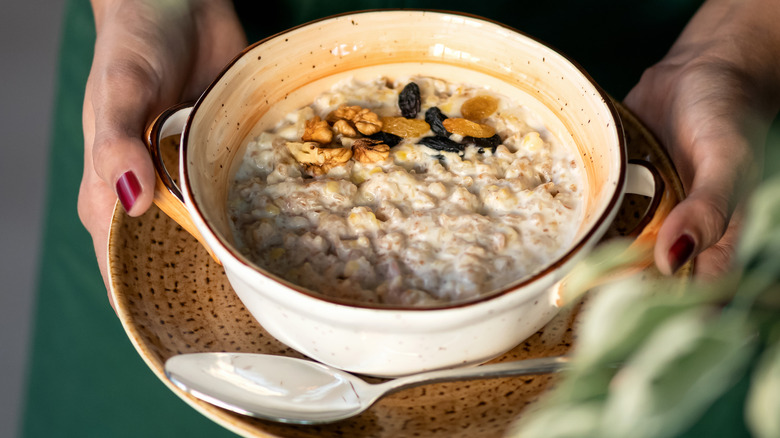Oatmeal Vs. Porridge: What's The Difference?
Served as a hearty breakfast or enjoyed as a savory snack, warm bowls of porridge can brighten even the coldest days. And while oatmeal and porridge may sound like the same thing, semantics separate the two, and we're here to clear up any confusion.
Porridge and oatmeal are often used to describe tasty bowls of mush, but not all porridge qualifies as oatmeal. The BBC explains that while porridge is typically made from oats and water or milk, bowls of porridge can also be made from buckwheat, quinoa, spelt, amaranth, and brown rice. In fact, "any grain, cereal, or legume that has been boiled in milk, water, or broth," can be considered porridge, clarifies Cooking for a Healthy Life.
The variations of porridge are nearly endless, notes Treehugger. Corn can be ground to make porridge — polenta, cornmeal mush, and grits all classify as porridge — and chefs around the world prepare mixtures of milk, sugar, and other grains to serve hot. In parts of Asia, a rice porridge called congee is often served, while a buckwheat porridge named kasha is enjoyed in Eastern Europe.
Regardless of what porridge is made out of — potatoes, quinoa, millet, sorghum, spelt — the prepared dish has been softened by hot liquid and cooked warm to eat. For oatmeal, however, ingredients matter.
One is not the other
When porridge is made from oats, it is called oatmeal. Oats can be steamed, rolled, or steel-cut, explains Cooking for a Healthy Life, and the prepared bowls can be dressed up with an assortment of toppings and ingredients. For example, Chef Jamie Oliver provides five easy ways to prepare thick, comforting bowls of oatmeal with butter, milk, golden syrup, brown sugar, hot chocolate powder, poppy seeds, desiccated coconut, cinnamon, and fruit. If you want to try your hand at savory oatmeal, we have a list of exciting ingredients that will spice up this breakfast staple like miso paste and hot sauce.
Regardless of the ingredients you choose to use, bowls of porridge and oatmeal can make meals as plain or as complex as you'd like them to be. Simply choose your preferred base grains or vegetables, add your choice of liquids, and season your gruel as sweet or as savory as you desire.

